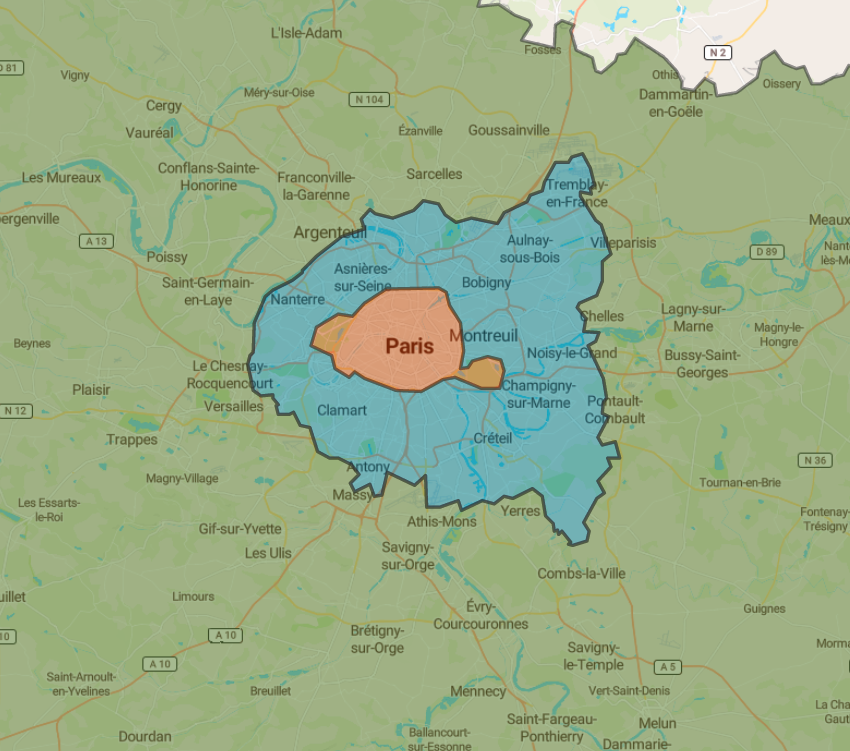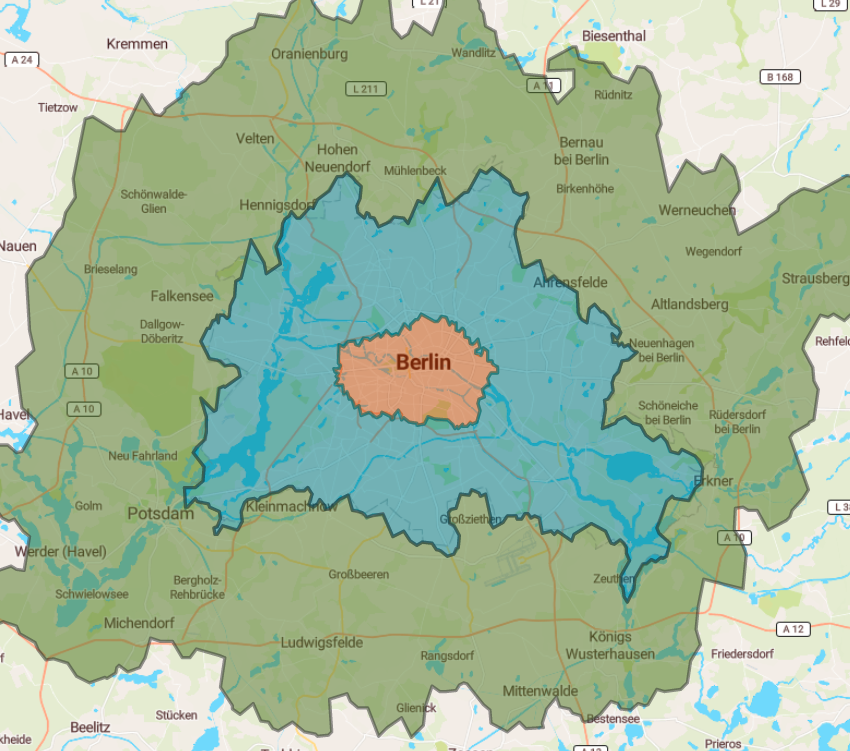Paris is to hold a referendum in February 2024 to triple parking charges (to €18/hour) in parts of the city, and double them (to €12/hour) in some of the outer parts of the city. Details of exactly what is proposed here. Great idea, I am all for it. The news even made it to Tagesschau. There are also a whole slew of plans to improve cycling infrastructure as well, above and beyond the major changes that have already happened while Anne Hidalgo has been mayor.
That prompted loads of people in the German transport debate to go “why can’t we do the same in Berlin?”
The answer is to do with political power, and the inner city, the outer city and the suburbs. A Zoomable version of the maps I use in this post can be found here.
This map roughly shows the inner city (orange), the outer city (blue) and the suburbs (green) of Paris. It uses amalgams of départements to form the borders.
Here is the same for Berlin – inner city (orange), the outer city (blue) and the suburbs (green). The inner city is the boundary of the Ringbahn, the outer boundary of the suburbs the limit of Zone C of the Berlin public transport ticketing system.
Now let’s add the politics onto this – first for Paris.
Orange is Ville de Paris (75), where Anne Hidalgo is mayor, and where she can set parking and cycling policy. Blue are the outer city départements Hauts-de-Seine (92), Seine-Saint-Denis (93) and Val-de-Marne (94). Outside them in green are départements Seine-et-Marne (77), Yvelines (78), Essonne (91) and Val-d’Oise (95):
Now let’s do this for Berlin. Blue is the Land of Berlin, and Green is the Land of Brandenburg. There is no orange. Yes, Berlin has its Bezirke, but they are too weak to decide parking or cycling policy on their own – they need the OK of the Land.
Look at it in population terms and it is even more stark. 2.1 million of the 10.8 million people in Paris’s urban area live in Ville de Paris – just 19%. 3.9 million of the 4.9 million in Berlin’s urban area (80%) live in the Land Berlin.
Berlin has a population density of 4,126/km2, while Paris is more than 20000/km2 (figures from Wikipedia from Paris and Berlin). Berlin has 338 cars per thousand of population, Paris around 270 per thousand.
Put all that together and you have an explanation for why all of this is more complex to solve in Berlin than in the Ville de Paris (because in the end what Hidalgo is solving is just Ville de Paris).
Ville de Paris is the densest inner city, where only 1/5 of the inhabitants of the urban area reside, but Hidalgo has political power there. No one has political power for parking and cycling only for the inner city in Berlin, but instead for the whole Land which is much less dense and has more cars per thousand residents than Ville de Paris and encompasses both the inner and the outer city.
There is no political body in Berlin that has the power to set the parking or cycling policy for the inner city alone. That is a central reason why Berlin struggles to make any progress on this issue.
Data sources for the maps
Berlin public transport zones – ODIS Berlin
Départements – France Geo Json
Germany – Open Data Lab





Pingback: Verräterische Intellektuelle wollen mit Hilfe der Wirtschaft das Grundgesetz ändern, um Parkplätze zu verteuern - Vermischtes 19.12.2023 - Deliberation Daily